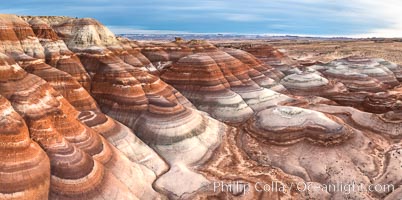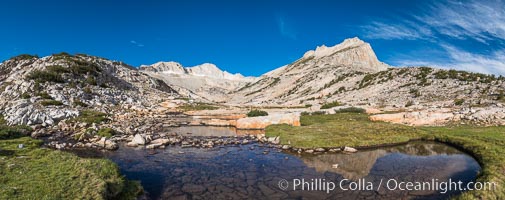
First View of Conness Lakes Basin with Mount Conness (12589' center) and North Peak (12242', right), Hoover Wilderness.
Location: Conness Lakes Basin, Hoover Wilderness, California
Image ID: 31057
Panorama dimensions: 5623 x 14211
Location: Conness Lakes Basin, Hoover Wilderness, California
Image ID: 31057
Panorama dimensions: 5623 x 14211
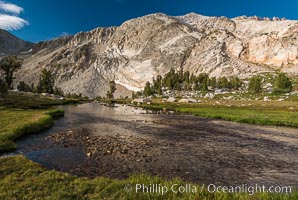
Twenty Lakes Basin near Conness Lakes, Hoover Wilderness.
Location: 20 Lakes Basin, Hoover Wilderness, California
Image ID: 31056
Location: 20 Lakes Basin, Hoover Wilderness, California
Image ID: 31056
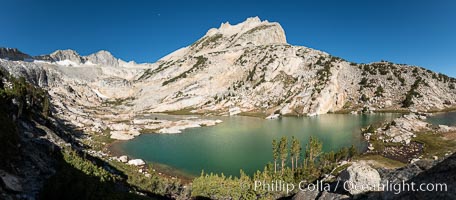
North Peak (12,242') over Conness Lake, water colored by glacier runoff, Hoover Wilderness.
Location: Conness Lakes Basin, Hoover Wilderness, California
Image ID: 36425
Panorama dimensions: 7198 x 16405
Location: Conness Lakes Basin, Hoover Wilderness, California
Image ID: 36425
Panorama dimensions: 7198 x 16405
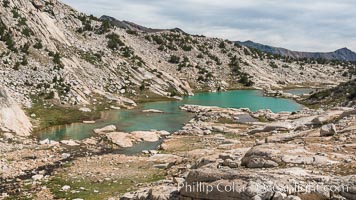
Conness Lake with green glacial meltwaters, Hoover Wilderness.
Location: Conness Lakes Basin, Hoover Wilderness, California
Image ID: 31067
Location: Conness Lakes Basin, Hoover Wilderness, California
Image ID: 31067
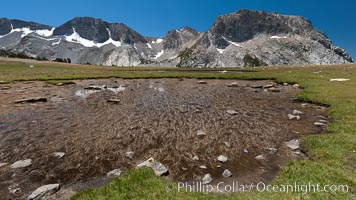
Tadpole tarns, a group of four small ponds on the rise above Evelyn and Townsley Lakes, that are full of tadpoles in late summer. Fletcher Peak rises to the right, the Cathedral Range to the left.
Location: Yosemite National Park, California
Image ID: 25778
Location: Yosemite National Park, California
Image ID: 25778
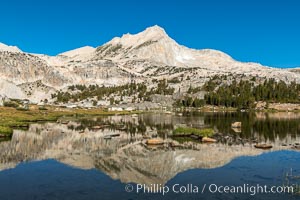
Greenstone Lake and North Peak, Hoover Wilderness.
Location: 20 Lakes Basin, Hoover Wilderness, California
Image ID: 36421
Location: 20 Lakes Basin, Hoover Wilderness, California
Image ID: 36421
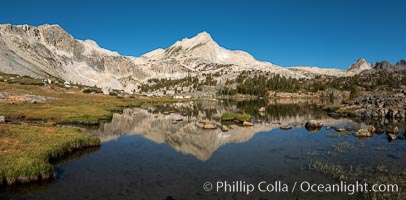
Greenstone Lake and North Peak, Hoover Wilderness.
Location: 20 Lakes Basin, Hoover Wilderness, California
Image ID: 36422
Panorama dimensions: 5022 x 10189
Location: 20 Lakes Basin, Hoover Wilderness, California
Image ID: 36422
Panorama dimensions: 5022 x 10189
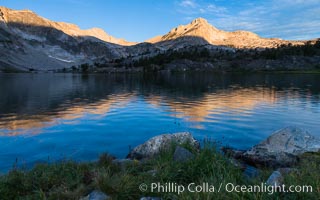
Greenstone Lake and North Peak, Hoover Wilderness, Sunrise.
Location: 20 Lakes Basin, Hoover Wilderness, California
Image ID: 31050
Location: 20 Lakes Basin, Hoover Wilderness, California
Image ID: 31050
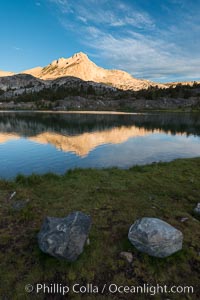
Greenstone Lake and North Peak, Hoover Wilderness, Sunrise.
Location: 20 Lakes Basin, Hoover Wilderness, California
Image ID: 31051
Location: 20 Lakes Basin, Hoover Wilderness, California
Image ID: 31051
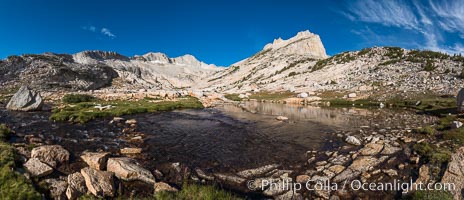
First View of Conness Lakes Basin with Mount Conness (12589' center) and North Peak (12242', right), Hoover Wilderness.
Location: Conness Lakes Basin, Hoover Wilderness, California
Image ID: 31058
Panorama dimensions: 6283 x 14584
Location: Conness Lakes Basin, Hoover Wilderness, California
Image ID: 31058
Panorama dimensions: 6283 x 14584
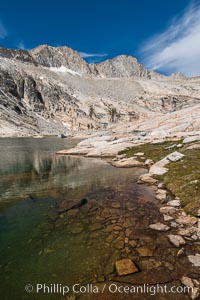
Mount Conness (12589') and Upper Conness Lake, Twenty Lakes Basin, Hoover Wilderness.
Location: Conness Lakes Basin, Hoover Wilderness, California
Image ID: 31065
Location: Conness Lakes Basin, Hoover Wilderness, California
Image ID: 31065
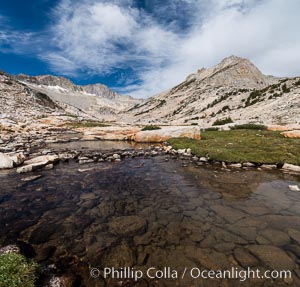
First View of Conness Lakes Basin with Mount Conness (12589' center) and North Peak (12242', right), Hoover Wilderness.
Location: Conness Lakes Basin, Hoover Wilderness, California
Image ID: 31070
Location: Conness Lakes Basin, Hoover Wilderness, California
Image ID: 31070
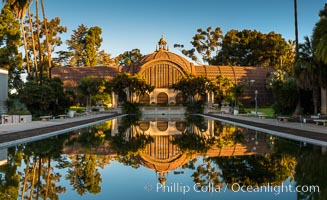
The Botanical Building in Balboa Park, San Diego. The Botanical Building, at 250 feet long by 75 feet wide and 60 feet tall, was the largest wood lath structure in the world when it was built in 1915 for the Panama-California Exposition. The Botanical Building, located on the Prado, west of the Museum of Art, contains about 2,100 permanent tropical plants along with changing seasonal flowers. The Lily Pond, just south of the Botanical Building, is an eloquent example of the use of reflecting pools to enhance architecture. The 193' by 43' foot pond and smaller companion pool were originally referred to as Las Lagunas de las Flores (The Lakes of the Flowers) and were designed as aquatic gardens. The pools contain exotic water lilies and lotus which bloom spring through fall.
Location: Balboa Park, San Diego, California
Image ID: 28824
Panorama dimensions: 6045 x 9876
Location: Balboa Park, San Diego, California
Image ID: 28824
Panorama dimensions: 6045 x 9876
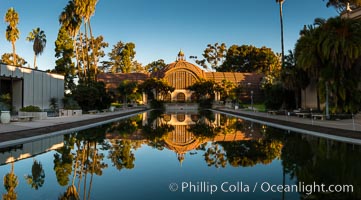
The Botanical Building in Balboa Park, San Diego. The Botanical Building, at 250 feet long by 75 feet wide and 60 feet tall, was the largest wood lath structure in the world when it was built in 1915 for the Panama-California Exposition. The Botanical Building, located on the Prado, west of the Museum of Art, contains about 2,100 permanent tropical plants along with changing seasonal flowers. The Lily Pond, just south of the Botanical Building, is an eloquent example of the use of reflecting pools to enhance architecture. The 193' by 43' foot pond and smaller companion pool were originally referred to as Las Lagunas de las Flores (The Lakes of the Flowers) and were designed as aquatic gardens. The pools contain exotic water lilies and lotus which bloom spring through fall.
Location: Balboa Park, San Diego, California
Image ID: 28825
Panorama dimensions: 6838 x 12347
Location: Balboa Park, San Diego, California
Image ID: 28825
Panorama dimensions: 6838 x 12347
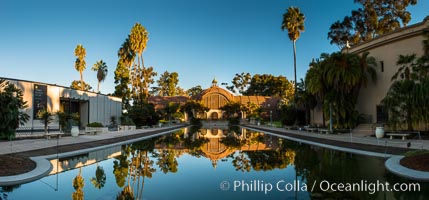
The Botanical Building in Balboa Park, San Diego. The Botanical Building, at 250 feet long by 75 feet wide and 60 feet tall, was the largest wood lath structure in the world when it was built in 1915 for the Panama-California Exposition. The Botanical Building, located on the Prado, west of the Museum of Art, contains about 2,100 permanent tropical plants along with changing seasonal flowers. The Lily Pond, just south of the Botanical Building, is an eloquent example of the use of reflecting pools to enhance architecture. The 193' by 43' foot pond and smaller companion pool were originally referred to as Las Lagunas de las Flores (The Lakes of the Flowers) and were designed as aquatic gardens. The pools contain exotic water lilies and lotus which bloom spring through fall.
Location: Balboa Park, San Diego, California
Image ID: 28826
Panorama dimensions: 5475 x 11746
Location: Balboa Park, San Diego, California
Image ID: 28826
Panorama dimensions: 5475 x 11746
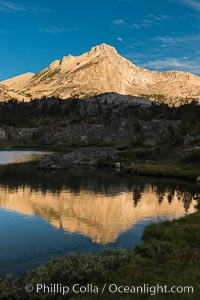
Greenstone Lake and North Peak, Hoover Wilderness, Sunrise.
Location: 20 Lakes Basin, Hoover Wilderness, California
Image ID: 31052
Location: 20 Lakes Basin, Hoover Wilderness, California
Image ID: 31052
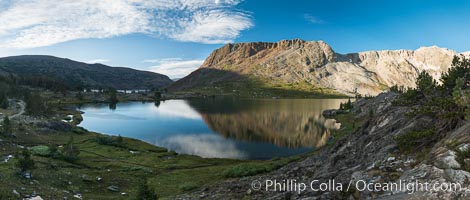
Greenstone Lake Panorama, Hoover Wilderness, Sunrise.
Location: 20 Lakes Basin, Hoover Wilderness, California
Image ID: 31053
Panorama dimensions: 5780 x 13582
Location: 20 Lakes Basin, Hoover Wilderness, California
Image ID: 31053
Panorama dimensions: 5780 x 13582
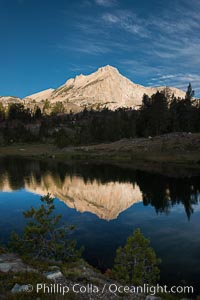
Greenstone Lake and North Peak, Hoover Wilderness, Sunrise.
Location: 20 Lakes Basin, Hoover Wilderness, California
Image ID: 31054
Location: 20 Lakes Basin, Hoover Wilderness, California
Image ID: 31054
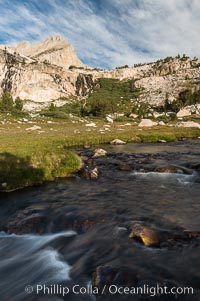
Twenty Lakes Basin near Conness Lakes, Hoover Wilderness.
Location: 20 Lakes Basin, Hoover Wilderness, California
Image ID: 31055
Location: 20 Lakes Basin, Hoover Wilderness, California
Image ID: 31055
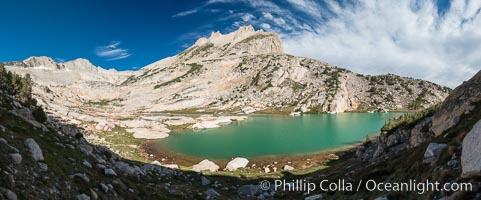
North Peak (12242', center), Mount Conness (left, 12589') and Conness Lake with its green glacial meltwater, Hoover Wilderness.
Location: Conness Lakes Basin, Hoover Wilderness, California
Image ID: 31060
Panorama dimensions: 6685 x 16072
Location: Conness Lakes Basin, Hoover Wilderness, California
Image ID: 31060
Panorama dimensions: 6685 x 16072
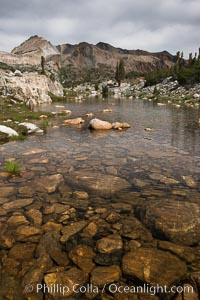
Nameless Lake, 20 Lakes Basin.
Image ID: 31071
Image ID: 31071
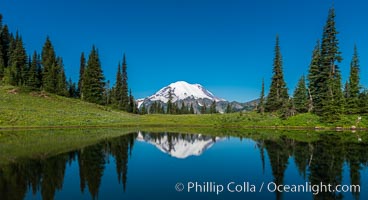
Mount Rainier reflected in Tipsoo Lake.
Location: Tipsoo Lakes, Mount Rainier National Park, Washington
Image ID: 28735
Location: Tipsoo Lakes, Mount Rainier National Park, Washington
Image ID: 28735
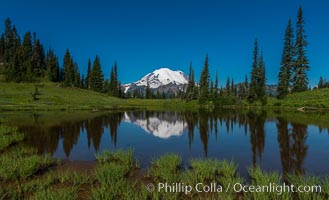
Mount Rainier reflected in Tipsoo Lake.
Location: Tipsoo Lakes, Mount Rainier National Park, Washington
Image ID: 28736
Location: Tipsoo Lakes, Mount Rainier National Park, Washington
Image ID: 28736
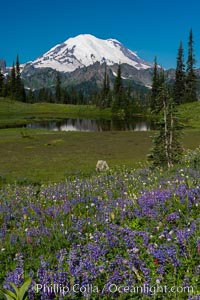
Mount Rainier and alpine wildflowers.
Location: Tipsoo Lakes, Mount Rainier National Park, Washington
Image ID: 28737
Location: Tipsoo Lakes, Mount Rainier National Park, Washington
Image ID: 28737
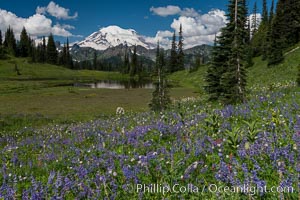
Mount Rainier and alpine wildflowers.
Location: Tipsoo Lakes, Mount Rainier National Park, Washington
Image ID: 28742
Location: Tipsoo Lakes, Mount Rainier National Park, Washington
Image ID: 28742
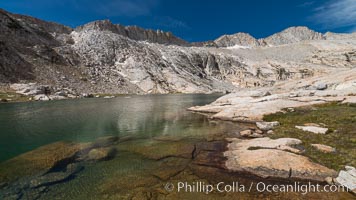
Mount Conness (12589') and Upper Conness Lake, Twenty Lakes Basin, Hoover Wilderness.
Location: Conness Lakes Basin, Hoover Wilderness, California
Image ID: 31063
Location: Conness Lakes Basin, Hoover Wilderness, California
Image ID: 31063
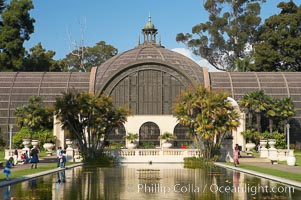
The Botanical Building in Balboa Park, San Diego. The Botanical Building, at 250 feet long by 75 feet wide and 60 feet tall, was the largest wood lath structure in the world when it was built in 1915 for the Panama-California Exposition. The Botanical Building, located on the Prado, west of the Museum of Art, contains about 2,100 permanent tropical plants along with changing seasonal flowers. The Lily Pond, just south of the Botanical Building, is an eloquent example of the use of reflecting pools to enhance architecture. The 193 by 43 foot pond and smaller companion pool were originally referred to as Las Lagunas de las Flores (The Lakes of the Flowers) and were designed as aquatic gardens. The pools contain exotic water lilies and lotus which bloom spring through fall. Balboa Park, San Diego.
Location: Balboa Park, San Diego, California
Image ID: 14578
Location: Balboa Park, San Diego, California
Image ID: 14578
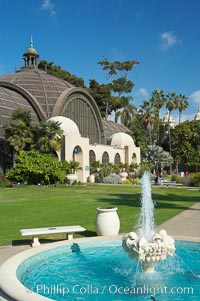
The Botanical Building in Balboa Park, San Diego. The Botanical Building, at 250 feet long by 75 feet wide and 60 feet tall, was the largest wood lath structure in the world when it was built in 1915 for the Panama-California Exposition. The Botanical Building, located on the Prado, west of the Museum of Art, contains about 2,100 permanent tropical plants along with changing seasonal flowers. The Lily Pond, just south of the Botanical Building, is an eloquent example of the use of reflecting pools to enhance architecture. The 193 by 43 foot pond and smaller companion pool were originally referred to as Las Lagunas de las Flores (The Lakes of the Flowers) and were designed as aquatic gardens. The pools contain exotic water lilies and lotus which bloom spring through fall. Balboa Park, San Diego.
Location: Balboa Park, San Diego, California
Image ID: 14582
Location: Balboa Park, San Diego, California
Image ID: 14582
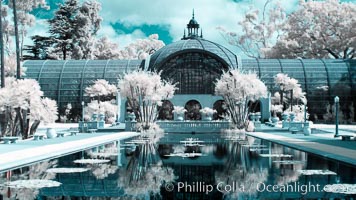
The Botanical Building in Balboa Park, San Diego. The Botanical Building, at 250 feet long by 75 feet wide and 60 feet tall, was the largest wood lath structure in the world when it was built in 1915 for the Panama-California Exposition. The Botanical Building, located on the Prado, west of the Museum of Art, contains about 2,100 permanent tropical plants along with changing seasonal flowers. The Lily Pond, just south of the Botanical Building, is an eloquent example of the use of reflecting pools to enhance architecture. The 193 by 43 foot pond and smaller companion pool were originally referred to as Las Lagunas de las Flores (The Lakes of the Flowers) and were designed as aquatic gardens. The pools contain exotic water lilies and lotus which bloom spring through fall.
Location: Balboa Park, San Diego, California
Image ID: 23096
Location: Balboa Park, San Diego, California
Image ID: 23096
